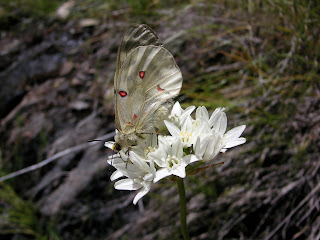Brassicaceae
Dr. Shapiro sent me a list of butterflies he recorded for Lang Crossing 3 days before our excursion. I was very disappointed to discover I wouldn't see the gorgeous lustrous copper at Washington and told Art as much. So, late in the afternoon, parched from the extremely warm day, as the shadows filled in the primo butterfly hangouts, we faced a dilemma: go straight to the Washington Hotel for some much needed liquid refreshment and call it a day, or go 10 miles up the road for me to see my first ever Lycaena cupreus at Lang. It was Art's wife who suggested doing both, but only after making him guarantee that I would see a copper butterfly. That guarantee looked like it was going to be a bust, because we failed to find any coppers at the spot Dr. Shapiro saw them previously. Fortunately, in a moist meadow across the river, we hit the coppery mother lode. I have so many pictures of this wildly, brilliantly, bold butterfly, including the last one above where a greenish blue wanted to get in on the photo shoot action. Tired as I was, I was extremely glad we made the extra hour and a half round-trip.
Some additional notes - If I hadn't known what to look for, I could have easily brushed off the resting butterfly in the second picture as the more-familiar-to-me acmon blue, with only the underside of the hindwings showing. It's easy to distinguish when they're flashing their brilliant copper tops or are still in a photograph, but from a distance and hiding in real life, it's not so easy.
There's some question how the lustrous copper larvae feed primarily on the moderately invasive sheep sorrel. With all the recent heavy bashing of non-native plants [I'm a believer in if it's alive, then why kill it? Unless it's doing great harm to others, our ever-changing opinions should not be the sole reason for death, which extends to humans and wars.], it's interesting to note that some native butterflies have taken to them and likely depend on them for their survival. Or do they? Art wonders if our local sheep sorrel (Rumex acetosella) has been incorrectly deemed an Old World species, and could be found native through genetics techniques. Hmm?
What tripped me up throughout the day was mistaking the blue moth (Caenurgina caerulea) for one of the blue butterflies. Now that I looked it up, it doesn't look blue at all. Weird. And finally, I would have had a difficult time figuring out which fuzzy blue butterfly is in the last picture, not to mention yellow mustard-looking plant, if it wasn't for Art's continuing patient guidance via e-mail. Thanks, Dr. Shapiro!
There's some question how the lustrous copper larvae feed primarily on the moderately invasive sheep sorrel. With all the recent heavy bashing of non-native plants [I'm a believer in if it's alive, then why kill it? Unless it's doing great harm to others, our ever-changing opinions should not be the sole reason for death, which extends to humans and wars.], it's interesting to note that some native butterflies have taken to them and likely depend on them for their survival. Or do they? Art wonders if our local sheep sorrel (Rumex acetosella) has been incorrectly deemed an Old World species, and could be found native through genetics techniques. Hmm?
What tripped me up throughout the day was mistaking the blue moth (Caenurgina caerulea) for one of the blue butterflies. Now that I looked it up, it doesn't look blue at all. Weird. And finally, I would have had a difficult time figuring out which fuzzy blue butterfly is in the last picture, not to mention yellow mustard-looking plant, if it wasn't for Art's continuing patient guidance via e-mail. Thanks, Dr. Shapiro!


















